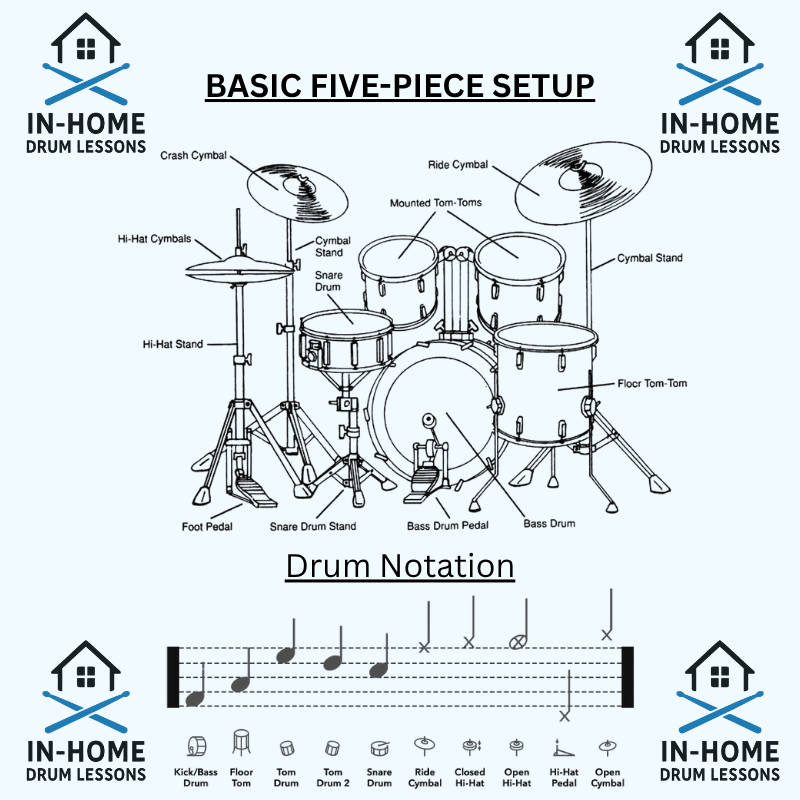🥁 Understanding Drum Notation – A Beginner’s Guide
If you’ve ever opened a drum book or looked at sheet music for the first time, you might have noticed something — there are no treble clefs or bass clefs. Instead, drummers use a percussion staff where each line and space represents a different part of the drum kit.
This basic five-piece drum setup diagram shows where each sound is located in your notation:
Hi-Hat (X notes) – Found above the top line of the staff, usually marked with an “X” note head.
Ride Cymbal (X notes) – Similar to hi-hat notation but placed on the top line on the staff.
Crash Cymbal (X notes) – Usually at the very top, above the hi-hat.
Snare Drum (Regular note head) – Positioned in the second space to the top of the staff.
Bass Drum (Regular note head) – At the very bottom of the staff.
Toms – Placed between snare and cymbals, with higher toms placed higher on the staff. and floor tom just above the bass drum
Why Learn Drum Notation?
Learn songs faster – You can pick up rhythms from sheet music without needing to hear them first.
Communicate with other musicians – Written music is the universal language for musicians.
Expand your skills – Notation lets you play styles and grooves outside your comfort zone.
Pro Tip: Start with simple rock beats and gradually add more notation symbols (like flams, ghost notes, and accents) as you get comfortable.
📚 Related Practice Blogs:
📍 In-Home Drum Lessons Available In:
Redondo Beach • Torrance • Gardena • Manhattan Beach • Palos Verdes
📞 Contact Info:
Drum Lessons In Home by David Montoya
📞 310-502-4413
🌐 www.drumlessonsinhome.com

